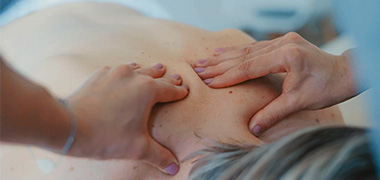
AI Occupational Exposure score unavailable For more insight, research the specific tasks and skills required for the role.
Explore all careersNeuromuscular Therapists help clients with neurological conditions by designing exercises and modifications to enhance mobility and quality of life.
Get qualified to work as a Neuromuscular Therapist with a course recognised across Australia. Speak to a training provider to learn more.
Browse occupations related to Neuromuscular Therapist
Generally, the annual salary ranges from approximately AUD 70,000 to AUD 110,000, which translates to a weekly salary of around AUD 1,346 to AUD 2,115. Increase your earning capacity by undertaking post-graduate qualifications in neuroscience and specialist training in neuromuscular therapies.
 Courses.com.au Team
Courses.com.au Team
There are no clear employment figures for Neuromuscular Therapist working in Australia. They may be employed by hospitals, community health organisations, and government organisations, as well as work in private practice.
 Courses.com.au Team
Courses.com.au Team
To work as a Neuromuscular Therapist in Australia you must be either a qualified Occupational Therapist or Physiotherapist. This means you will need to complete a Bachelor of Occupational Therapy or Bachelor of Applied Health Science (Physiotherapy) and then seek professional accreditation with the Australian Health Practitioner Regulation Agency (AHPRA).
Source: Australian Government Labour Market Insights 2023
 Courses.com.au Team
Courses.com.au Team



Neuromuscular Therapists are qualified Physiotherapists and Occupational Therapists who work with clients with physical impairments due to neurological conditions such as stroke, Multiple Sclerosis, Parkinson’s, and Muscular Dystrophy. They design physical exercises, orthotics, and home modifications to help their clients increase their range of motion and live more active and fulfilling lives.
As a Neuromuscular Therapist you could be designing exercises to help a stroke patient regain their sense of balance, assessing a patient with motor neurone disease, helping a patient with MS regain muscle control, educating caregivers on how to carry out exercises and treatment therapies at home, evaluating neurological tests on a stroke patient, or collaborating with other health professionals to ensure the best outcome for the patient.